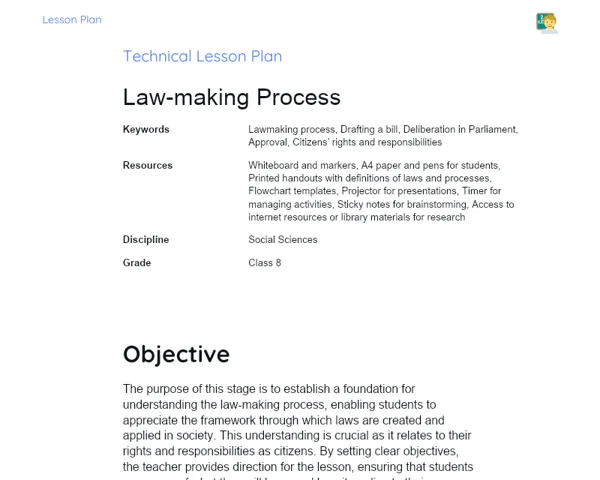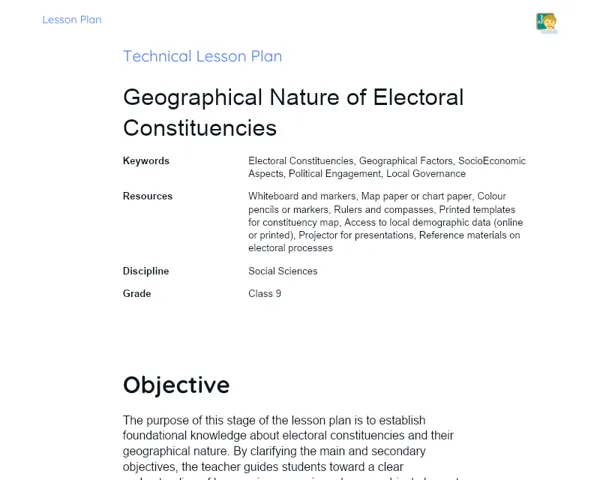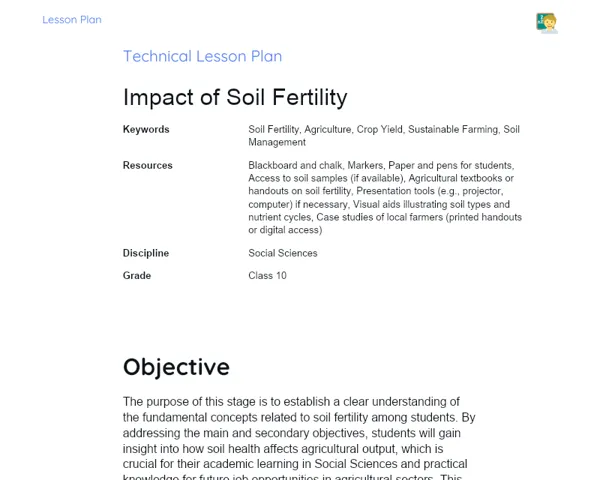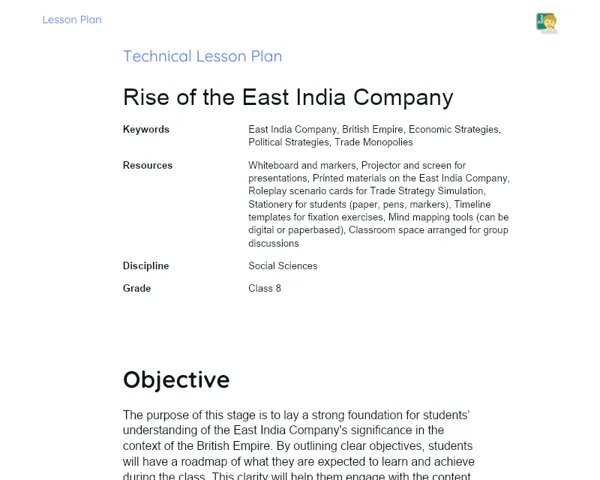Lesson Plan | Active Methodology | Sensitivity to Social Issues
| Keywords | Social Sensitivity, Active Learning, Community Perspectives, Debate, Empathy, Role-Play, Critical Thinking, Social Issues, Local Contexts, Awareness, Creative Activities, Teamwork, Engagement, Reflection |
| Necessary Materials | Whiteboard and markers, Character profile sheets for role-play, Poster-making materials (paper, markers, colours, glue), Timer for managing activity durations, Printouts of community scenarios and social issues, Projector (if needed for presentations), Feedback forms for group discussions, Space for group activities and performances |
Premises: This Active Lesson Plan assumes: a 100-minute class duration, prior student study both with the Book and the beginning of Project development, and that only one activity (among the three suggested) will be chosen to be carried out during the class, as each activity is designed to take up a large part of the available time.
Objectives
Duration: (10 - 15 minutes)
This stage aims to clearly articulate the primary objectives of the lesson, ensuring that students understand the essential skills they will develop regarding social issues. By defining these objectives upfront, students will have a clearer direction and purpose as they engage in the active learning activities throughout the lesson. These objectives will also serve as a framework for assessing their understanding and engagement with the topic.
Main Objectives:
1. Demonstrate awareness and sensitivity towards various social issues affecting local communities.
2. Foster critical thinking by analysing the impact of social issues on different demographics.
Introduction
Duration: (15 - 20 minutes)
This stage aims to review the students' previous knowledge of social issues while introducing them to the main themes of the lesson. By presenting engaging problem situations, students will recall their earlier studies and recognize the relevance of understanding diverse perspectives. Contextualizing the importance of social sensitivity through real-life instances will encourage students to relate personally to the topic, enhancing their engagement and critical thinking throughout the lesson.
Problem-Based Situation
1. Imagine a local community where a new factory is being built. Some residents are excited about job opportunities, while others are concerned about pollution affecting their health and environment. How do different groups in the community perceive this situation?
2. Consider a scenario where a school in your area decides to hold a fundraising event to support underprivileged children. Some students feel very passionate about it, while others think it’s not their responsibility. How can these differing views reflect their awareness of social issues?
Contextualization
Understanding sensitivity to social issues is crucial as it shapes how individuals and communities coexist. Real-life stories, such as the efforts of local NGOs fighting for the rights of street children or initiatives aimed at bridging the educational gap in rural areas, illustrate the profound impact social awareness can have. For example, the inspiring journey of a girl from a village in Maharashtra, who broke barriers to obtain an education, highlights the importance of active engagement with social issues. Curiosity about the diverse perspectives in our society can spark important discussions, leading to positive change in our local communities.
Development
Duration: (10 - 15 minutes)
This stage of the lesson plan aims to engage students actively in exploring and understanding social issues through creative and collaborative activities. By allowing students to participate in a hands-on manner, they will develop critical thinking and empathy towards various perspectives within their community. This approach not only solidifies their understanding of social issues but also encourages lively discussions and teamwork, making learning memorable and impactful.
Activity Suggestions
It is recommended that only one of the suggested activities be carried out
Activity 1 - The Great Debate: Community Perspectives!
> Duration: (60 - 70 minutes)
- Objective: To foster critical thinking and empathy by encouraging students to understand and articulate diverse perspectives on social issues.
- Description: In this lively debate activity, students will explore various social issues related to different community perspectives. They will be split into groups representing various stakeholders in a community facing a social issue. Each group will research their assigned perspective, prepare arguments, and participate in a structured debate. For instance, some students could represent factory workers excited about new job opportunities, while others could represent concerned residents worried about environmental impacts. This vibrant exchange of ideas will help students understand the nuances of social issues and how they affect different groups.
- Instructions:
-
Divide the class into groups of up to 5 students.
-
Assign each group a perspective related to the chosen social issue (e.g., factory job opportunities vs. environmental concerns).
-
Provide 15 minutes for groups to discuss and prepare their arguments.
-
Conduct the debate, allowing each group 3-5 minutes to present their side and a rebuttal time.
-
Encourage students to ask questions after each presentation to deepen their understanding.
Activity 2 - Social Issue Role-Play: Walking in Their Shoes!
> Duration: (60 - 70 minutes)
- Objective: To enhance empathy and understanding of social issues by allowing students to experience the emotions and challenges faced by others.
- Description: This role-playing activity involves students stepping into the shoes of individuals affected by a specific social issue. Each group will receive a character profile detailing a person's life, challenges, and feelings related to a social issue (e.g., poverty, discrimination). Students will act out a scenario, highlighting the emotional and social implications of the issue while promoting empathy and understanding.
- Instructions:
-
Split the class into groups of up to 5 students.
-
Distribute character profiles related to the social issue.
-
Give students 10 minutes to read and discuss their characters.
-
Instruct each group to create a short skit (3-5 minutes) based on their character's experiences.
-
Have each group perform their skit for the class, followed by a brief discussion on the feelings expressed.
Activity 3 - Social Awareness Poster Competition: Art for Change!
> Duration: (60 - 70 minutes)
- Objective: To encourage creativity and reflection on social issues while fostering teamwork and communication skills.
- Description: In this creative activity, students will design posters that highlight a chosen social issue, using local contexts to reflect the community's needs. Groups will brainstorm ideas, create their posters, and then present them to the class, explaining the message they want to convey. This not only encourages creativity but also allows students to express their views on social issues visually.
- Instructions:
-
Divide the class into groups of up to 5 students.
-
Have each group choose a social issue they feel passionate about.
-
Provide materials like paper, markers, and colours for poster-making.
-
Allow 30 minutes for groups to create their posters.
-
Each group will then take turns presenting their poster to the class, explaining their design and message.
Feedback
Duration: (15 - 20 minutes)
The purpose of this feedback stage is to consolidate the learning experience by encouraging students to articulate their insights and reflect on their understanding of social issues. Through group discussions, students will have the opportunity to share their thoughts, fostering a collaborative learning environment where diverse opinions can lead to deeper insights. This stage not only reinforces the knowledge gained through activities but also empowers students to consider how they can contribute positively to society.
Group Discussion
Now that each group has shared their experiences, let’s come together and have a discussion about what we've learned today. I would like each of you to reflect on the perspectives you represented and think about how they relate to the larger community. How can we use this understanding to create a more sensitive environment towards social issues? Let’s hear from everyone!
Key Questions
1. What was the most surprising perspective that you encountered during the activities?
2. How did role-playing help you understand the emotions and challenges faced by individuals affected by social issues?
3. In what ways can we apply what we have learned today to our local community?
Conclusion
Duration: (10 - 15 minutes)
The purpose of this conclusion stage is to encapsulate the key learnings from the lesson while reinforcing how theoretical knowledge translates into tangible actions. By summarizing the content, bridging theory with practice, and discussing the real-world significance of social sensitivity, students can reflect on their engagement and internalize the importance of taking informed actions in their daily lives.
Summary
In this lesson, students explored various social issues that affect local communities, gained insight into different perspectives through debates, role-plays, and creative activities. Students learned to empathize with individuals affected by issues like pollution, poverty, and discrimination, fostering a deeper understanding of the complexities involved. They engaged in meaningful discussions about their roles in promoting social sensitivity, highlighting their awareness of how these issues impact their surroundings.
Theory Connection
This lesson intricately connected theory and practice by allowing students to apply their theoretical knowledge about social issues through active participation. The activities designed not only reinforced the academic concepts of empathy and social awareness but also provided real-life applicability by encouraging students to think critically about their community and the challenges faced therein. The integration of debates, role-play, and poster-making ensured that students could conceptualize and actualize their understanding of social issues in practical situations.
Closing
Ultimately, sensitivity to social issues is vital in creating a more inclusive society. By understanding the diverse perspectives of individuals affected by various challenges, students can cultivate compassion and proactive engagement. This lesson empowers them to not only reflect on their roles in addressing these issues but also inspires them to take action, whether through advocacy, volunteerism, or simply being more considerate of those around them. The lessons learned today will resonate in their daily interactions, fostering a culture of awareness and proactive engagement in tackling social issues within their own communities.



